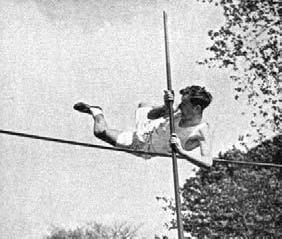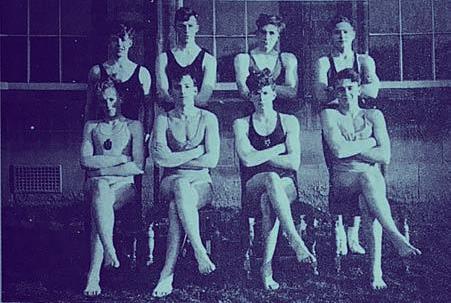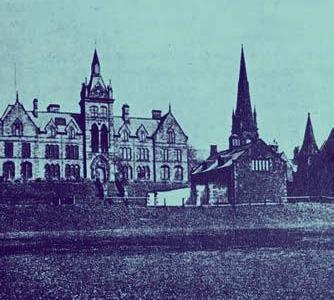
3 minute read
A HISTORY OF THE RGS IN ITS SPORT DAVID GOLDWATER
from ONA 106
A HISTORY OF THE RGS IN ITS SPORT
BY DAVID GOLDWATER (51-62)
Advertisement
Sport in its many guises is a strong feature of most modern schools, RGS providing a particularly brilliant example. But it was not always so. David Goldwater investigates the origins of sport at RGS.
Above: 1825 map showing the future RGS site. Opposite (clockwise): JR McManus in the pole vault; WW Kreshmarr (Achilies and German javelin champion) RGS, 1965; RGS Groundsman Bob Telford; Rye Hill School; RGS Sports Day in the 50s; RGS water polo team, 1947
Some traditional schools had developed
adapted versions of existing sports, notably Eton, Winchester and Rugby, or invented their own, as at Rugby School, which acquired an eponymous sport when William Webb Ellis (allegedly) picked up the ball and ran with it in 1823. Generally, however, traditional sport was under attack from all sides; factory owners wanted a regular working week; property owners feared the damage caused by large crowds and churches criticised idleness, drunkenness and slack morality.
By Victorian times, however, sport became linked to a moral code defined by the middle classes and it was accepted that sport could develop character and morality. By the turn of the 20th Century, organised sporting involvement expanded rapidly across all classes. However, the different classes played their sport separately and public school athleticism still dominated sport. Between the wars (1918-1939), football (in all its





versions) continued to increase in popularity and by the 1930s, was the most popular sporting activity. There was little government involvement in sport, apart from Physical Education (PE) in schools, which was, however, becoming a more creative discipline.
A major turning point across the entire school sector was when Physical Education was established in the 1944 Education Act for its educational value. Physical Education moved away from educational values towards physical recreation and more recently towards healthrelated fitness.
Today, various academic qualifications in Physical Education have stimulated scrutiny of the subject (for example, BEd, CSE, GCSE, A Level). Nowadays, Physical Education is firmly established in the national curriculum as a foundation subject whilst there has been an increasing influence of market forces on schools, Physical Education, sports facilities and sport. It was at the RGS Rye Hill site (1870-1906), pictured above (bottom right), that sport became established as a regular RGS activity, but there were limited facilities for sport there; a gymnasium was built on the site only after 20 years. There was an ‘Eton Court’ for playing Eton Fives and rugby was played on nearby grounds. Playing fields were already sited in Jesmond, along the Great North Road, although the building of the Fleming Memorial Hospital in 1888 resulted in the loss of the school’s then rented ground.
Numbers were, at last, growing and by 1895 the governors were considering a move, ‘to the best site in the City’. Negotiations with the City Council to acquire land in Eskdale Terrace, Jesmond, began in 1896, the land acquired in 1903 and the new school buildings, more or less as we know them today, were opened in 1906.










